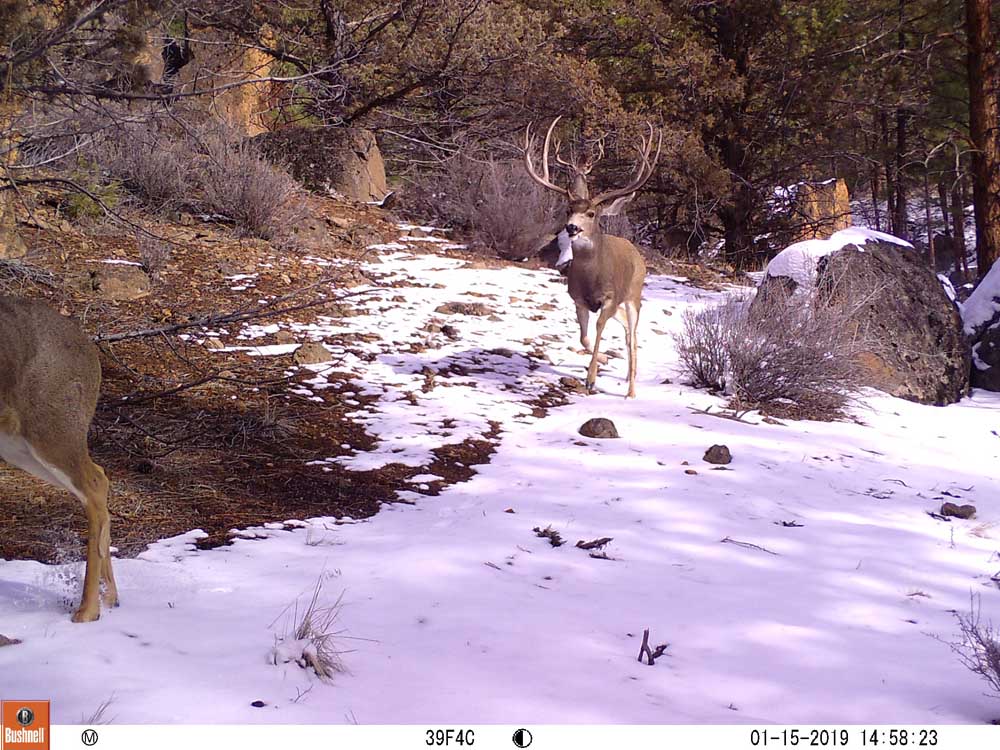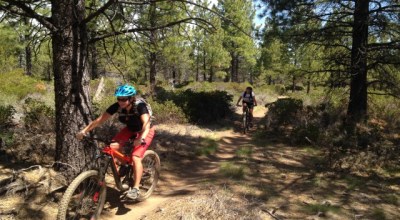Bend park district trail cameras capture bobcat, coyote and other wildlife
Published 6:30 am Friday, March 8, 2024

- A mule deer goes stag on this wintry walk.
Cameras have come a long way in the past couple of decades. Digital photos have revolutionized capturing moments, and it’s never been easier to keep the best one and discard others instantaneously. On our front porches, we can monitor to see who is coming and going and the status of package deliveries with stunning clarity.
But the cameras I am most keen on right now are trail cameras and what they capture of wildlife in our area. Because of our community’s position among massive expanses of public forests and High Desert plateau, I shouldn’t have found it a surprise how frequently wildlife finds their way into Bend neighborhoods, parks and trails.
I connected recently with the Bend Park & Recreation District’s Natural Resources and Trails team at Park Services to learn more about the frequency and variety of wildlife taking selfies (usually not intentionally) on our trail cameras. They shared some of the best shots captured in the past few years, and they didn’t disappoint. Make no mistake, wild animals are frequent park and trail visitors, and we have the photo evidence to prove and appreciate it.
Least camera shy: Mule deer
No surprise here — mule deer are abundant and their behavior and territory tend to fluctuate during the year. We have fawns, stags and does in singles, pairs and small groups.
Porcupine
A nocturnal animal, porcupine tend to be solo and stick to tree canopy during the day. Most are so camouflaged, also called Crypsis (or cryptic coloration) or natural camouflage, you can’t see them until they choose to scratch their claws on the trunk to descend. While they are slow-moving and typically don’t instigate interactions, they can wreak havoc on a dog who unwisely chooses to tussle with a porcupine.
In the fall, my dog had a near encounter in our backyard, but I spotted the porcupine first and quickly called my dog indoors. That was too close for my comfort.
Bobcat
Predator cats are more prevalent than one might think, and they have posed for some great trail camera photos. While not as fearsome as a cougar, a bobcat will protect its area, especially if there’s a nearby den with cubs. A couple of years ago, there was an active den at Shevlin Park and BPRD posted signs throughout the area. In those circumstances, our commitment to land stewardship means recreation activities take a back seat. Our ability to coexist with nature means sometimes we’re leaving them alone and giving extra space.
Coyote
Coyote yelps are unmistakable and serve as a good indicator that taking a different route is going to make you and them happier and less stressed. I’ll never forget the day I was running and a coyote crossed less than 50 yards in front of me. It was focused on trying to get a vole as a lunch meal, so I was able to stop and just observe and admire it.
Beaver
With abundant bodies of water, signs of beaver are prevalent across the community. My colleague calls them ecosystem engineers, and I like that description. They change the environment around them to create ideal beaver ponds for lodges and are quite territorial over their homes and kits. We’ve seen footage of beavers defending their territory from coyotes, which is awe-inspiring for a nature lover and gives me pause when I consider letting my dog off-leash.
Keeping pets safe
Infrequently, we have confirmed sightings of a cougar that result in warnings to keep pets indoors and on leashes in areas near the sighting. This is solid advice all the time, not just when someone observes a predator and reports it, because more often than not, predators are present and aware of us before we ever observe them.
Keeping pets on leash is a great way to practice tried and true leave no trace principles while keeping pets safe.
Why public parks are essential for human interaction
Next time you’re enjoying our nearby nature spaces, take note of your surroundings and take precautions for yourself and your pet. A leash will prevent most negative encounters because it will keep your animal near you. That’s the last place any wildlife wants to be. Don’t take it personally. They feel that way about all of us.
Despite the one-way affectionate relationship, I find joy knowing they are around us.




